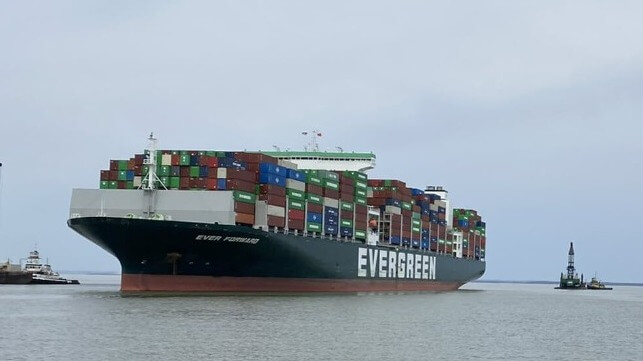Ever Forward Fails to Move During First Refloating Effort

Efforts got underway today to move the Ever Forward, but after approximately six hours of trying the salvage crews stopped reporting the vessel had not moved. Weather and tidal conditions, however, were reportedly working against the efforts prompting the U.S. Coast Guard to report that a new effort was planned for Wednesday at the high tide when conditions might improve.
Five tugs were positioned today after nearly 10 days of dredging removed 84,000 cubic yards of spoil from around on behind the vessel. The salvage team’s analysis of the situation showed that the stern was closest to the channel so the efforts had tried to push the vessel from her starboard side while other tugs pulled in an attempt to move her backward toward the channel.
By 6:00 p.m. local times reports indicated that the tug lines had slackened and that two tugs were seen moving away from the vessel. In addition to gusty winds in the area, the north wind for the past few days created a phenomenon known as a “blowout tide” in the Chesapeake Bay where the winds drive water out of the bay. Similar tidal conditions were present in the bay when the vessel went aground more than two weeks ago.
The plan had been to resume dredging and to add two anchor pulling barges to the next attempt to refloat the vessel, which was scheduled for April 3 and 4. However, with the expectations that tides would be higher tomorrow as the winds relaxed in the area, the U.S. Coast Guard said the plan was to attempt to pull the vessel on Wednesday.
If they are still unsuccessful at refloating the Ever Forward, the salvage team plans to review the plan and resume dredging. If these attempts fail to refloat the vessel, the next alternative is believed to begin offloading containers which would be a slow and cumbersome process.

that matters most
Get the latest maritime news delivered to your inbox daily.
